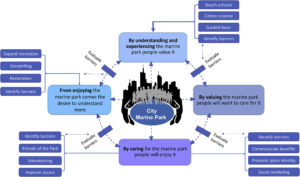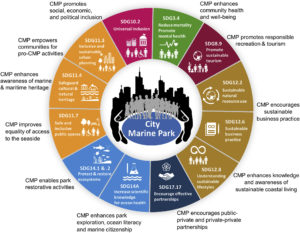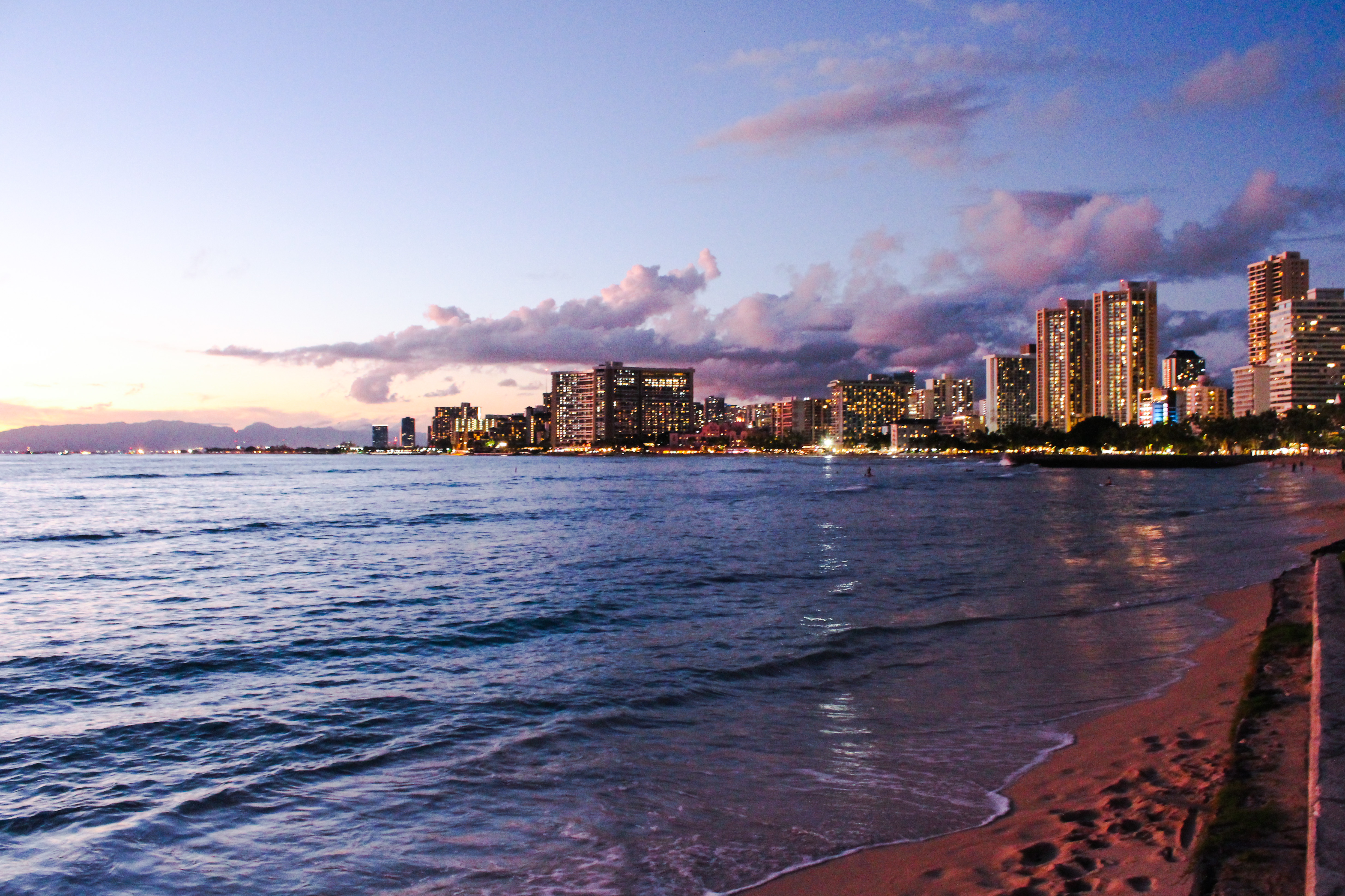Pittman, S. J., L. D. Rodwell, R. J. Shellock, M. Williams, M. J. Attrill, J. Bedford, K. Curry et al. “Marine parks for coastal cities: A concept for enhanced community well-being, prosperity and sustainable city living.” Marine Policy 103 (2019): 160-171.
More than half the world’s population lives within 50 miles of a coast. Many people depend on coastal ecosystems not only for economic benefits but also social and emotional benefits. Much like green space, “blue space”, or areas for people to interact with water, can boost emotional wellbeing and provide a place for city dwellers to interact with the ocean. With the rapid urbanization of coastal areas, coastal ecosystems are at risk for degradation and people living in proximity to the coast could experience the loss of these benefits if development continues in the current manner. The authors of this article propose several ways to incorporate blue space into city living in a way that will promote sustainable development along the coast.
A new kind of water park
The authors’ main proposal centers around the construction of “City Marine Parks” or CMPs which are meant to help cities be more sustainable as they develop to accommodate growing populations. While the paper has some nifty graphics and reads more like a report or a proposal than a scientific journal article, they back up their claims and ideas using evidence from a variety of other articles. Since cities produce a lot of pollution and negative health effects, the authors argue that policy makers and city officials should try to develop city plans that incorporate green and blue spaces, thus improving public health while increasing awareness of marine ecosystems. They also envision CMPs as a place that connects the ecosystem services of marine environments with the daily lives of people who live in the city.

Getting the most out of CMPs:
The researchers outlined several benefits the city would receive from implementing CMPs. These benefits could include:
- Heightened inclusivity and participation for citizens – A CMP would ideally encourage people from different socio-economic statuses to connect with nature by removing barriers associated with participation. Ensuring public access to the CMP would be a top priority.
- Opportunities for environmental education – Interacting with a CMP would help raise residents’ awareness of marine ecosystems and spark conversations about how to protect and conserve them.
- Improved health and wellbeing for residents – CMPs would provide residents with a place to exercise, socialize and relax. Like green spaces, blue space has also been linked with increased health and wellbeing.
- Sustainable economic and business ventures – CMPs could partner with ecotourism companies to give visitors an enhanced experience
- Engagement with cultural heritage – Residents using the CMP would likely feel a sense of place connected to the “blue roots” of the area. This would foster a shared identity and community.
- Increased connection between land and sea development – Broadly, the time spent in CMPs would increase the understanding of how land-based activities impact marine ecosystems and vice versa.
A more detailed list of benefits is outlined in the graphic below.

Too good to be true?
While the framework for CMPs is developing rapidly, they are still a long way off from becoming a reality in coastal cities. Extensive collaboration between policy makers, city officials, business owners and other community leaders will be necessary in order to ensure the city residents are getting the most out of the CMPs. The authors recognize that coastal cities face a variety of unique social, economic and environmental challenges related to sustainable development. They also recognize that the idea of CMPs is ambitious, but advocate that it has the potential to be one of many solutions facing sustainable urban development today. Rather than a “one size fits all” approach, CMPs would be tailored to each city’s needs. As a result, “blue urbanism,” or a connection between residents and the water, would start to increase in cities that adopted CMPs. Overall, CMPs would be a valuable tool for coastal cities adapting to climate change, but they would require a good amount of both time and money from many groups of residents.
I recently graduated with a degree in Environmental Earth Science and Sustainability from Miami University of Ohio, and I recently started my MSc at the University of Victoria. While my undergraduate research focused on biogeochemical cycles in lakes and streams, I am excited to pursue my MSc in the El-Sabaawi Lab and explore how urbanization might impact fisheries. In my free time, I love to travel to somewhere off the beaten path, read fantasy novels, try new recipes, and plan my next trip to the ocean.

